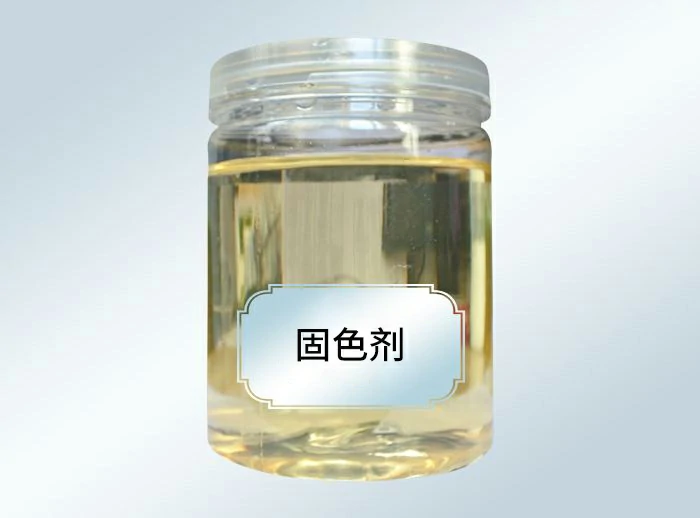
Color fixing agent refers to a class of compounds that can make the dyestuff and fiber more effectively fixed between them, which can improve and enhance the soaping and washing fastness of the dyed fabric, so that the color of the fabric is not easy to fade and stain after dyeing and washing. And require the use of formaldehyde-free color fixing agent to ensure the environmental protection of the fabric.
Performance of color fixing agent
1. has strong color fixing ability, which can make the relevant color fastness of the fabric significantly improved.
2. wide adaptability of dyes and less influence on color fixation effect.
3. strong affinity with fiber and high absorption rate in the solid color bath.
4. The fabric will not cause color and light changes after being treated with color fixing agent.
5. in improving the color fastness (such as washing fastness) at the same time, should not reduce other color fastness (such as sunlight fastness).
6. It does not affect the feel of the fabric and does not cause a decrease in the strength of the fabric.
The role of color fixing agent
1. Generate insoluble color precipitate on the fabric, close the soluble group, so that the dye on the fabric is not easy to dissolve off in water, to improve the purpose of wet treatment fastness. However, this color fixing agent after fixing color, easy to make the color and light of the dyed material change or cause sun fastness decline.
2. Generate a net-like film on the fabric to stop the dye from coming off.
3. Using the reactive groups in the molecule of color fixing agent, cross-linking with the reactive groups on the dye molecule and the hydroxyl groups on the cellulose molecule, to improve the fixing effect of the dye on the fiber.
4. Use the molecular gravitational force of color fixing agent and fiber to increase the fixing strength of color fixing agent and thus improve dyeing fastness.
Types of color fixing agents
Non-reactive color fixing agent:non-reactive color fixing agent color fixing mechanism is generally closed water-soluble groups and fiber surface film two, can be divided into cationic color fixing agent and resin-type color fixing agent.
Cationic color fixing agent mainly through the cation and the anionic group in the dye molecule to form ionic bonding, so as to close the water-soluble group, to improve the purpose of wet treatment fastness.
Resin-based color fixatives are further divided into two categories, polyamine condensates and quaternary ammonium polymers.
Polyamine condensates are polymers made of polyamines such as ethylene polyamines and dicyandiamide or condensed with other compounds, which are cationic in nature and have both a reticular structure and can produce macromolecular compounds with anionic dyes, which can improve the wet treatment fastness of dyed fabrics and also improve the wet ironing fastness of reactive dyes.
Quaternary ammonium polymer is polymerized from olefin with quaternary ammonium group, homopolymer, or copolymerized with other monomers to achieve the purpose of color fixation with the help of film-forming and cationic groups. This type of color fixing agent is water-soluble, especially for reactive dyestuff, treated fabric color bright, good chlorine fastness, sunlight resistance, good fastness to perspiration, and can protect the reactive dyestuff from the acidic atmosphere, but the higher temperature of washing fastness is poor.
Reactive color fixing agent: reactive color fixing agent is usually the introduction of reactive groups in the color fixing agent molecule, the most commonly used reactive gene groups for the epoxy group, generally usually introduced epichlorohydrin. This type of color fixing agent in addition to reactive groups can be cross-linked with the fiber, its color fixing mechanism is often still through the cationic groups to close the water-soluble anionic groups and resin film formation to achieve.
Special performance color fixing agent: This type of color fixing agent according to its different properties can be divided into: nylon color fixing agent, wet friction fastness improvement agent, special color fixing agent for emerald blue, hydrophilic color fixing agent, color fixing agent for eliminating red light.
*Disclaimer: The content contained in this article comes from the Internet, WeChat public numbers and other public channels, and we maintain a neutral attitude toward the views expressed in the article. This article is for reference and exchange only. The copyright of the reproduced manuscript belongs to the original author and the institution, and if there is any infringementPlease contact Jetson Chemical for deletion
